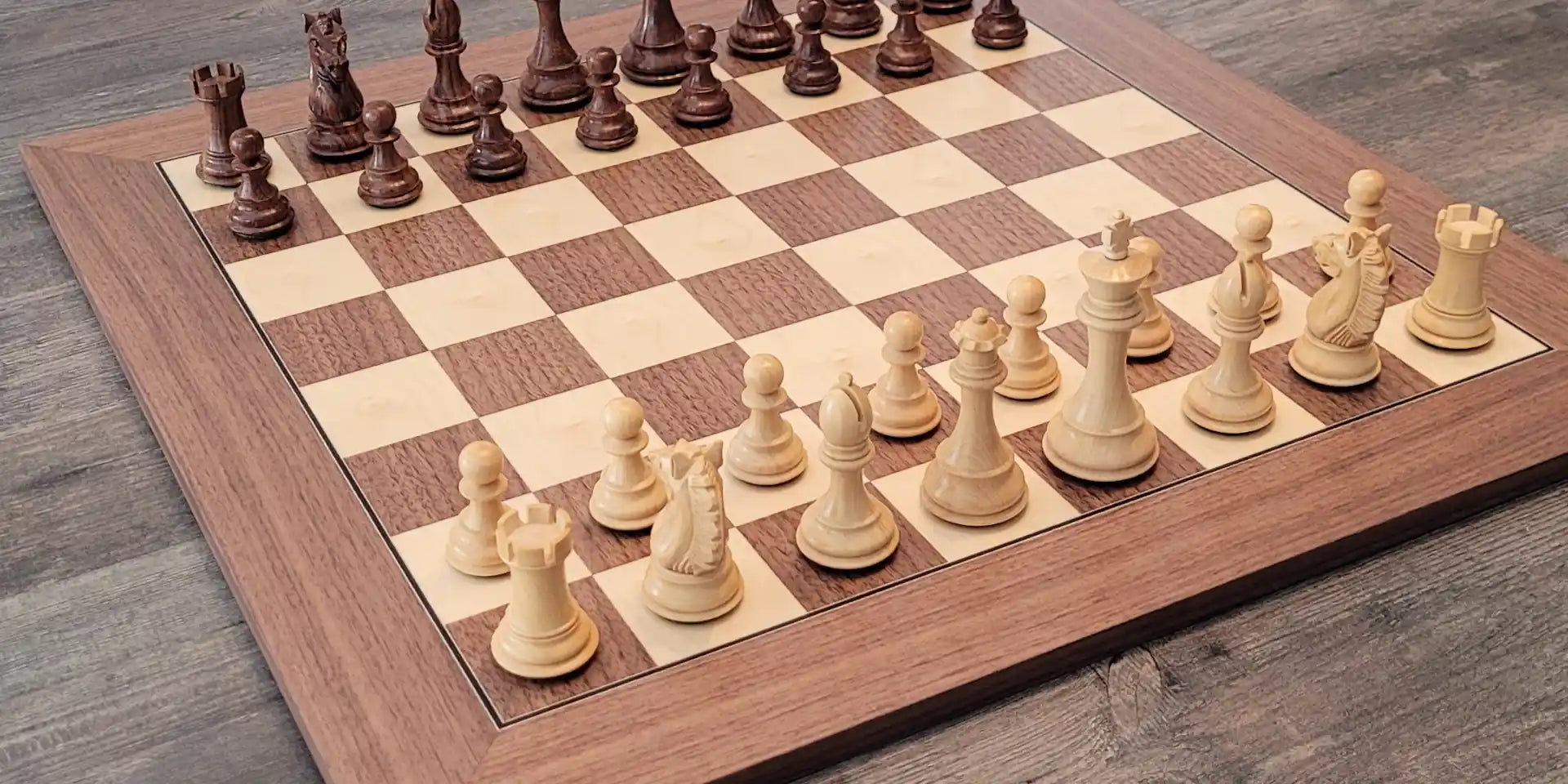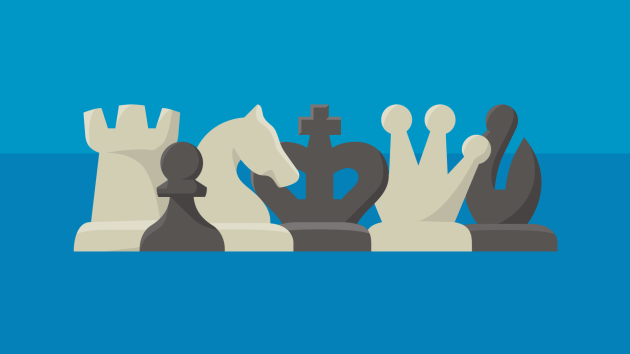Smart Ways to Recognize Chess Traps
Wiki Article
All Concerning Chess: Discover the Remarkable History and Approaches Behind the Game
Chess, with its origins going back to sixth century India, has transformed considerably over the centuries. This game has captivated minds worldwide, showcasing the brilliance of legendary gamers like Garry Kasparov and Bobby Fischer. Recognizing the intricacies of chess, from the movements of each piece to necessary techniques, exposes its depth. The question stays: what drives the withstanding attraction with this old game? Exploring its background and methods might discover much deeper understandings.The Origins of Chess: A Journey Via Time
Although the precise beginnings of chess stay uncertain, historical proof recommends that the game developed from earlier strategies played in India around the sixth century. Referred to as Chaturanga, this early type of chess included items standing for infantry, cavalry, elephants, and chariots, showing the armed forces tactics of the moment. As Chaturanga spread out through profession courses, it adapted to different societies, causing the creation of Shatranj in Persia. This variant introduced new policies and item activities, laying the structure for modern-day chess.Chess Prodigies: Notable Figures in the Game's Background
Throughout chess history, exceptional prodigies have actually emerged, forming the game's landscape and inspiring future generations. From epic champs that controlled the boards in their time to modern talents redefining the restrictions of young people and skill, these gamers have made indelible marks on the sport. Their tales highlight not only individual brilliance but also the advancing nature of chess as a competitive venture.Epic Chess Champions
Chess has actually been shaped by the sparkle of numerous legendary champions whose payments have actually left an indelible mark on the game. Numbers like Garry Kasparov, recognized for his dynamic design and unparalleled critical depth, dominated the chess globe during the late 20th century. Anatoly Karpov, his rival, showcased extraordinary positional understanding and emotional prowess, safeguarding several globe titles. Bobby Fischer, an American natural born player, revolutionized chess with his unrivaled skill and extreme focus, culminating in his 1972 World Championship victory. Furthermore, José Raúl Capablanca's all-natural capacity and endgame proficiency set brand-new standards in the very early 20th century. These champions not only mastered competitors but additionally motivated generations, shaping chess right into an international phenomenon commemorated for its intellectual rigor and creativity.Modern Prodigies
What makes a chess prodigy absolutely impressive? The ability to understand complicated approaches at an astonishingly young age establishes them apart. Contemporary chess prodigies like Magnus Carlsen, Fabiano Caruana, and Alireza Firouzja have actually astounded target markets with their amazing ability. Carlsen, coming to be a Grandmaster at simply 13, redefined expectations and rose to Globe Champ standing. Caruana, known for his deep prep work and tactical prowess, has constantly tested the elite. Firouzja, born in 2003, stands for the new generation, combining creativity with ruthless ambition. These players exhibit a blend of inherent skill, rigorous training, and psychological determination, influencing the game's advancement. Their payments ensure that chess continues to be a dynamic and dynamic discipline, motivating future generations of players worldwide.Comprehending the Chessboard: Parts and Their Motions
The chessboard acts as the battlefield where complicated methods unfold, featuring a special set of items, each with distinct movements and roles. Consisting of 64 squares prepared in an 8x8 grid, it is home to the king, queen, rooks, knights, bishops, and pawns. The king, the most important piece, moves one square in any kind of instructions, while the queen, the most powerful, can go across any kind of variety of squares up and down, flat, or diagonally. Rooks move in straight lines, whereas bishops slide diagonally throughout the board. Knights have an unique L-shaped movement, leaping over other items. Pawns progress one square however capture diagonally, with the option to relocate 2 squares ahead on their first action. Each item's motion adds to the elaborate dance of approach and methods, making the chessboard a dynamic phase for intellectual combat. Comprehending these activities is fundamental for gamers intending to navigate the intricacies of the game.
Vital Techniques for Beginners: Tips to Improve Your Game
Mastering the activities of chess pieces prepares for developing efficient methods. For beginners, concentrating on managing the facility of the board is essential. This enables higher movement and impact over the game. Establishing items early, as opposed to relocating the very same piece several times, can assist develop a strong setting.In addition, gamers must prioritize king safety and security by castling early, guaranteeing the king is stashed from threats. Acknowledging tactical opportunities, such as forks, pins, and skewers, can offer benefits in material gain. It is likewise important to assume ahead; expecting an opponent's relocations cultivates far better defensive and offending play.
Keeping a well balanced method between aggressive and defensive techniques can protect against unneeded blunders. By implementing these fundamental strategies, beginners can enhance their gameplay and develop a strong foundation for future enhancement in chess.
Advanced Tips: Boosting Your Chess Abilities
In the domain of chess, grasping innovative methods can greatly boost a gamer's ability. Acknowledging tactical patterns, mastering endgame methods, and recognizing opening up concepts are essential aspects that elevate one's game. These components not only improve general performance but also foster much deeper strategic thinking.
Tactical Patterns Acknowledgment
Recognizing tactical patterns is important for raising chess abilities to a greater level. Players who master these patterns can identify possibilities for tactical maneuvers, improving their opportunities of success. Typical patterns consist of forks, pins, skewers, and discovered assaults, each offering strategic benefits when performed properly. Recognizing these concepts enables gamers to expect their challenger's actions and counter them successfully. In addition, researching traditional games can reveal just how masters used tactical patterns to safeguard success. Routine practice and evaluation of one's very own games can even more reinforce pattern recognition, making it possible for gamers to respond swiftly and accurately throughout suits. Eventually, developing this skill transforms the method to chess, bridging the space between amateur and innovative play.Endgame Approaches Proficiency
Effective endgame methods can greatly influence the result of a chess suit, usually identifying Learn More Here the difference between a win and a draw. Advanced players understand the significance of item coordination and the usage of pawns in the endgame. Key strategies consist of promoting pawns to queens and producing passed pawns that can progress unblocked. Acknowledging crucial placements, such as the resistance and zugzwang, is essential for achieving advantageous setups. Proficiency of endgame techniques, such as king and pawn versus king situations, can transform prospective losses right into draws or wins. Players must additionally concentrate on simplifying the position when ahead, exchanging pieces to convert product benefits right into triumph. Continual technique and analysis of endgame placements will raise a player's general chess abilities greatly.
Opening Principles Comprehending
Grasping endgame approaches lays a solid structure for understanding opening concepts. In chess, the opening stage is essential as it sets the stage for the middle game. Chess. Players should prioritize control of the facility, creating items successfully, and making certain king safety and security. Reliable openings typically include moving pawns to develop central supremacy while collaborating minor and significant items for peak activity. The concepts highlight not moving the same item numerous times without need and staying clear of early queen advancement, which can bring about susceptability. By sticking to these foundational strategies, players can produce a strong structure that improves their tactical chances later in the game. Recognizing these opening concepts is essential for boosting one's chess skills and accomplishing success
The Social Influence of Chess: Why It Issues Today
Chess, a video game with origins tracing back over a millennium, remains to apply a profound cultural influence around the world. It transcends plain enjoyment, acting as a device for education, essential thinking, and social communication. Numerous schools include chess into their educational programs, promoting cognitive growth and critical thinking among students. The game additionally fosters inclusivity, uniting varied areas and encouraging intergenerational connections.Chess has penetrated prominent culture, inspiring literature, movies, and also fashion. Legendary figures like Bobby Fischer and Garry Kasparov have ended up being social symbols, showing the game's possibility for personal and national satisfaction. In the electronic age, on the internet systems have better democratized accessibility to chess, making it possible for millions to engage with the game. As culture faces complicated challenges, chess stays pertinent, providing lessons in persistence, foresight, and strength, thereby strengthening its significance in contemporary culture and day-to-day life.
Frequently Asked Questions
Exactly How Has Chess Influenced Popular Society and Media?
Chess has considerably influenced pop culture and media, appearing in movies, literature, and art. It represents intelligence and method, motivating narratives my latest blog post and personalities while advertising motifs of conflict, competitors, and the human experience.What Are the Perks of Playing Chess for Mental Health?

Exist Various Chess Versions Played Around the Globe?
Yes, different chess versions are played globally, including Bughouse, Chess960, and Three-check chess. Each variant presents special guidelines and methods, providing gamers with varied experiences and obstacles that differ from conventional chess.Exactly How Do Chess Engines and AI Effect Modern Chess?
Chess engines and AI considerably improve contemporary chess by supplying sophisticated analysis, improving gamer skills, and influencing strategies. They work as training devices and competitors aids, transforming just how gamers approach the game whatsoever degrees.What Are Usual Misunderstandings About Chess Athletes?
Typical misconceptions concerning chess gamers include the idea that they are all withdrawn brilliants, exclusively concentrated on method. Chess. In truth, Our site players differ significantly in character, history, and strategy, frequently delighting in social communications and diverse interestsReport this wiki page